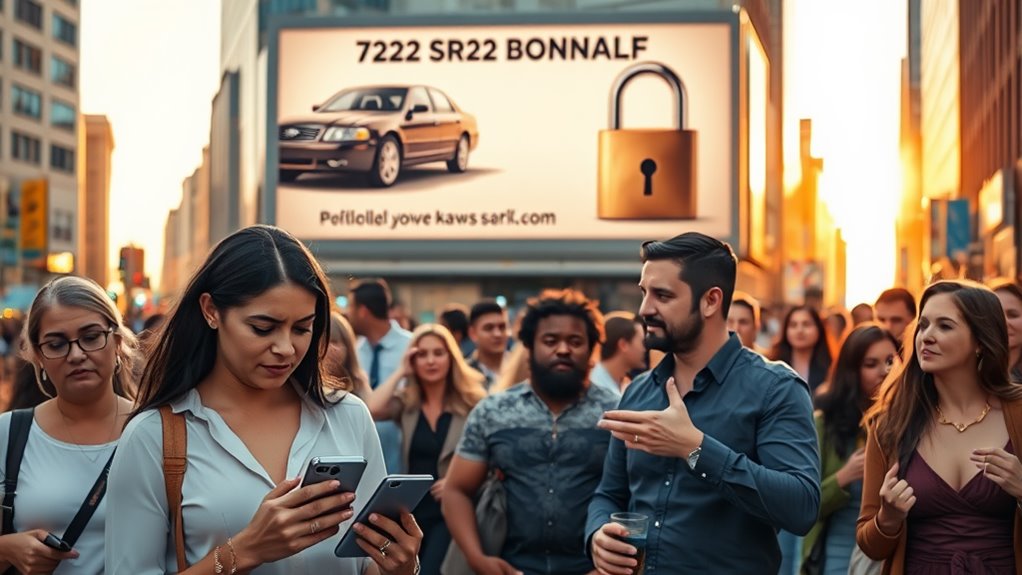Why Do Misconceptions About SR22 Bonds Persist?
You might think you understand what an SR22 bond is, but misconceptions about it are more common than you realize. Many people confuse it with a financial bond or insurance policy, overlooking its true role as a regulatory document. This misunderstanding often stems from complex terminology and varying state regulations. As you explore the nuances behind SR22 bonds, you'll uncover why these misconceptions continue to thrive in public discourse.
While many people mistakenly think of SR22 as a type of insurance, it's actually a regulatory document that proves you have the minimum required liability coverage to reinstate your driving privileges. This misunderstanding stems from the terminology used in the insurance industry, where the term "SR22" is often conflated with insurance policies. In reality, SR22 isn't an insurance product but a certificate that attaches to your existing car insurance policy—or it may require you to purchase a new policy. Understanding affordable SR22 insurance can help mitigate costs associated with these requirements.
One reason misconceptions about SR22 bonds persist is the confusion surrounding the nature of the document. Many individuals incorrectly perceive SR22 as a financial bond, leading to further misunderstanding. Unlike bonds, which are financial instruments representing a loan made by an investor to a borrower, SR22 serves a regulatory purpose. It's important for demonstrating that a driver meets state-mandated insurance requirements, particularly for those deemed high-risk due to past driving offenses. This distinction is significant, yet it often gets overlooked. Notably, a recent study found that 30% of fixed-income mutual funds contain misclassified holdings, highlighting how misinterpretations can occur in various financial contexts.
Misunderstandings about SR22 persist due to its regulatory nature, often confused with financial bonds, despite its critical role for high-risk drivers.
Another common misconception is that SR22 coverage applies to the vehicle rather than the driver. In truth, SR22 is tied to your driving record and not the specific car you drive. So, if you borrow or rent a vehicle, your SR22 doesn't automatically extend coverage. This misunderstanding can have substantial implications, especially if you find yourself in an accident while driving a borrowed car without adequate insurance.
The financial impact of SR22 requirements also contributes to the persistence of misconceptions. Drivers often believe the cost of SR22 is embedded within the document itself, but the reality is that the expense lies in the higher insurance coverage mandated by state laws. Because SR22 often requires higher premiums, it can lead to increased overall insurance costs. Your driving record plays a more significant role in determining insurance premiums than the SR22 certification itself, which further complicates how people perceive the financial implications of SR22.
Moreover, the duration for which you must maintain SR22 insurance varies by state, often lasting up to three years. This requirement necessitates continuous coverage, and any lapse can result in penalties, including license revocation. Each state's unique regulations add to the confusion, as drivers may not be aware of the specific rules governing SR22 in their jurisdiction. This patchwork of laws can cause misinformation to proliferate, as drivers compare notes without understanding the nuances.
Finally, the terminology itself can perpetuate misunderstandings. The use of "SR22" might evoke associations with other financial or insurance terms, leading to further confusion. It's important to clarify that SR22 is strictly a regulatory compliance document aimed at ensuring drivers maintain adequate liability coverage.
Understanding these distinctions can help you navigate the complexities surrounding SR22 and dispel the myths that continue to circulate in public discourse. By educating yourself about the true nature of SR22, you can make informed decisions regarding your driving privileges and insurance needs.
Conclusion
In the domain of auto insurance, SR22 bonds are often seen as a tangled web of confusion. Just as a lighthouse guides ships through stormy waters, understanding SR22 can illuminate the path to compliance and clarity. By demystifying the regulatory nature of SR22 and recognizing it as proof of liability coverage, you can navigate your driving responsibilities with confidence. Knowledge is your best ally in avoiding the pitfalls of misconception and ensuring you're adequately protected on the road.
